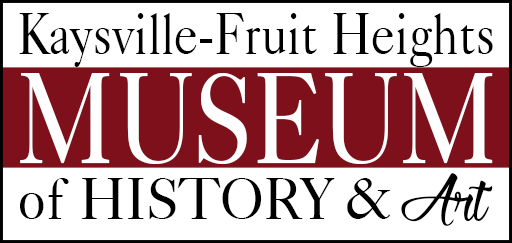Bicentennial
PAINTINGS
Prior to the United States Bicentennial, William J. Critchlow III, an Ogden attorney with an interest in northern Utah history, obtained funds from the local Bicentennial Commission to contract local artists to create 63 paintings for the 1976 celebration. Twenty-three artists from throughout Utah participated in the project and are represented in the Bicentennial Art Collection at Weber State University. Former members of the art faculty of Weber State, Utah State, University of Utah, and Brigham Young University, along with a number of local professional and freelance artists were commissioned.

In 2023, the Weber State University Storytelling Festival, Utah’s Division of Arts and Museums, and Kaysville – Fruit Heights Museum of History and Art, have collaborated to share reproductions of some of the paintings, the history represented and connections to Kaysville and Fruit Heights area past. Sixteen artists and twenty-eight paintings from the original exhibit have been initially selected for inclusion here and in the 2023 Bicentennial Art Exhibit Guide.
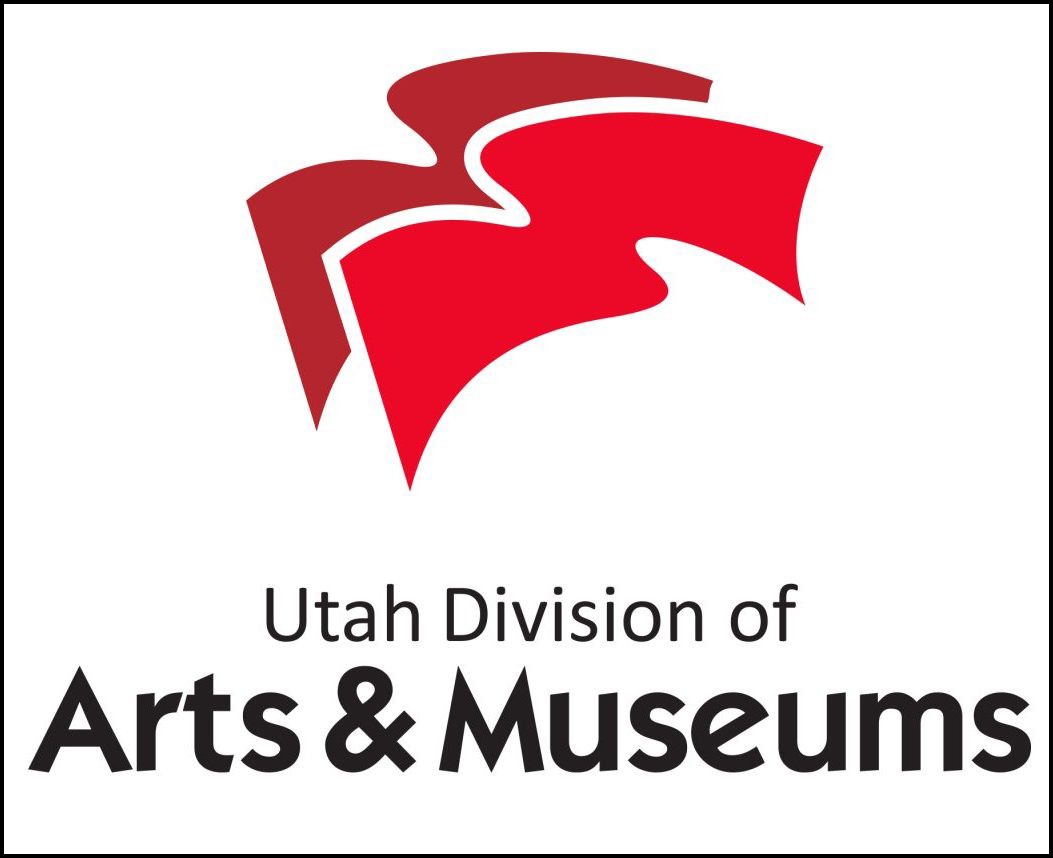
In 2023, the Weber State University Storytelling Festival, Utah’s Division of Arts and Museums, and Kaysville – Fruit Heights Museum of History and Art, have collaborated to share reproductions of some of the paintings, the history represented and connections to Kaysville and Fruit Heights area past. Sixteen artists and twenty-eight paintings from the original exhibit have been initially selected for inclusion here and in the 2023 Bicentennial Art Exhibit Guide.


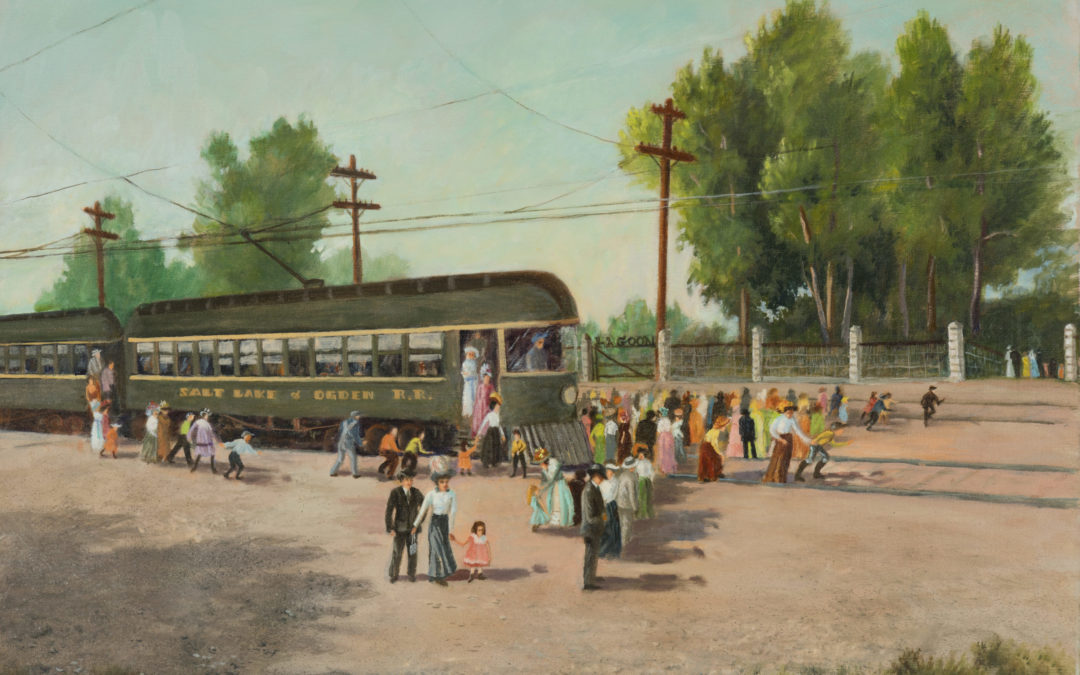
Bamberger to Lagoon
Mary Roberts Warnock, Artist
The Bamberger Railroad was built in 1891 by wealthy capitalist, entrepreneur, and Utah governor, Simon Bamberger. The railroad was first known as the Great Salt Lake and Hot Springs Railway, and later as the Salt Lake and Ogden Railway.
The “Bamberger” was considered to be one of the most efficient, and successful passenger and freight…
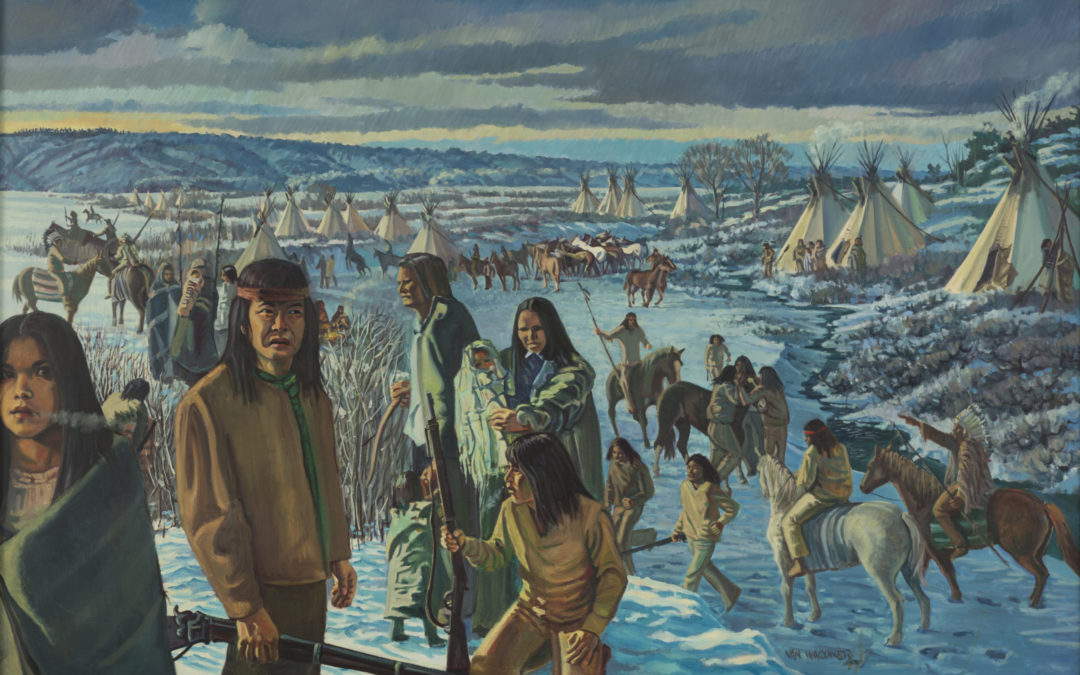
Battle of Bear River
Richard J. Van Wagoner, Artist
Due to federal concerns about the state of the Union during the American Civil War, President Abraham Lincoln ordered several regiments to protect mail routes and communication lines to the west. Colonel Patrick Connors was put in…
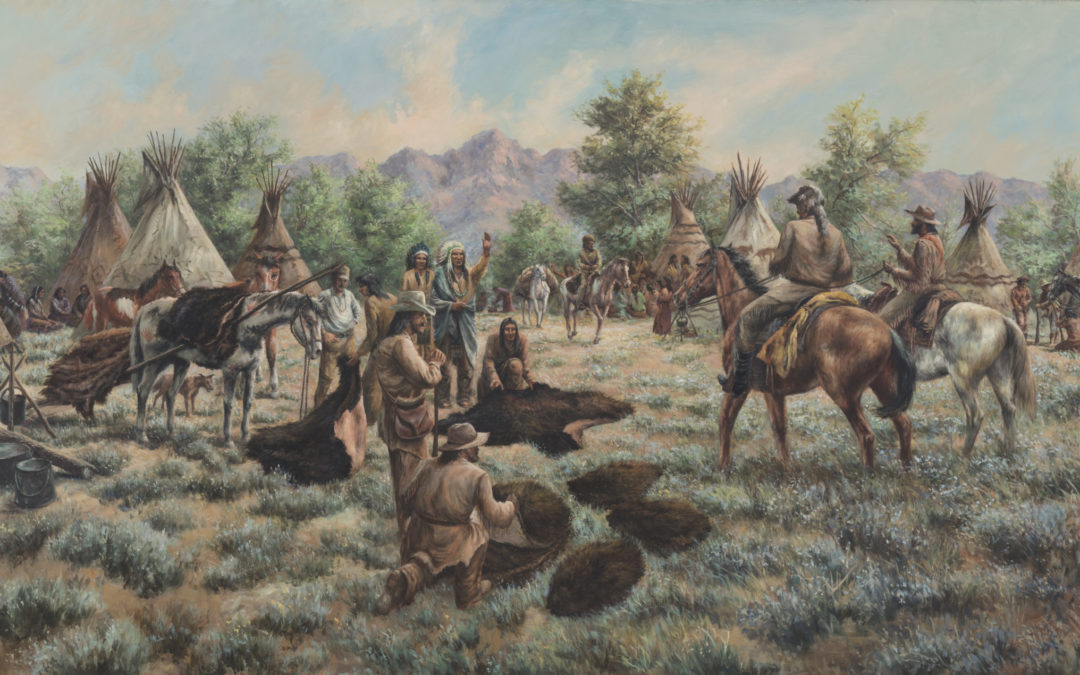
Cache Valley Rendezvous
Lee K. Parkinson, Artist
It was traditional for mountain men to meet for an annual rendezvous to trade beaver pelts, restock supplies, and share stories of their experiences traveling through the western mountains and prairies. Native Americans were also…
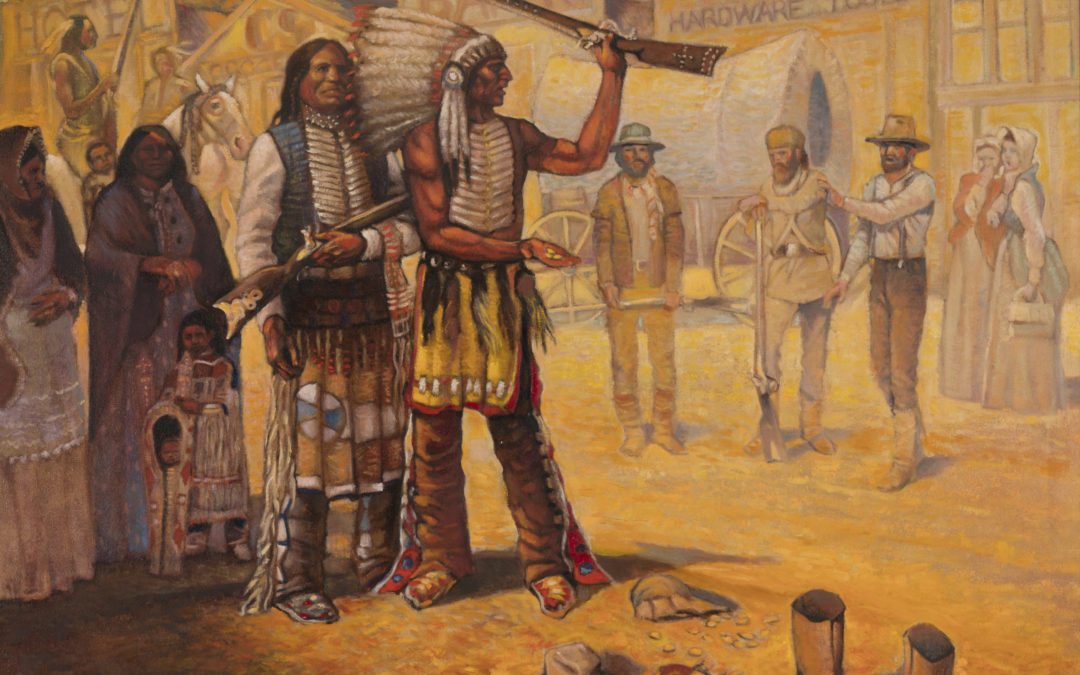
Chief Pocatello at Brigham City
Gary E. Smith, Artist
Pocatello or Paughatella was born in 1815 in the Grouse Creek region. He was a Shoshone leader when the Mormons arrived in the late 1840s. As colonization intensified, Pocatello led raids along immigrant trails. War broke out in 1862 when Shoshone struck every stage station in a wide area. Pursued by the military, weary and discouraged, Pocatello and eight other Shoshone leaders signed a treaty on July 30, 1863, but the Shoshone continued to suffer and find relief in…
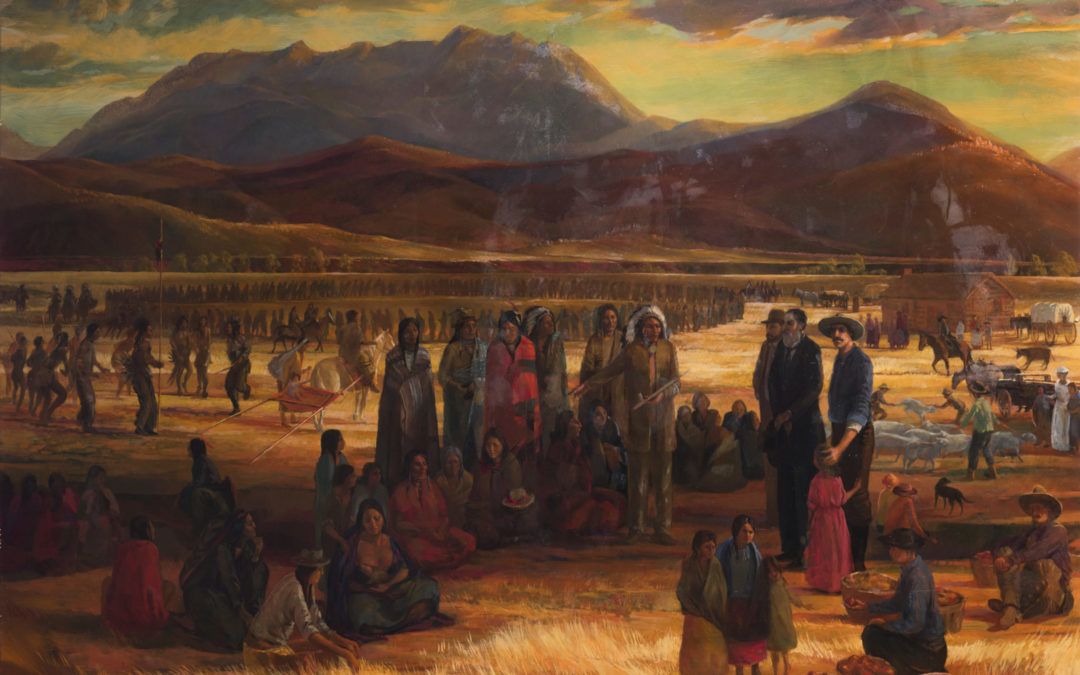
Chief Washakie at Huntsville
Franz Johansen, Artist
Chief Washakie (1804-1900) was a prominent Shoshone leader and was among the most famous Native American leaders. He was known to be a powerful warrior and statesperson and played a significant role in the development of the western United States territory by forming strong relationships with mountain men, government officials, and religious…
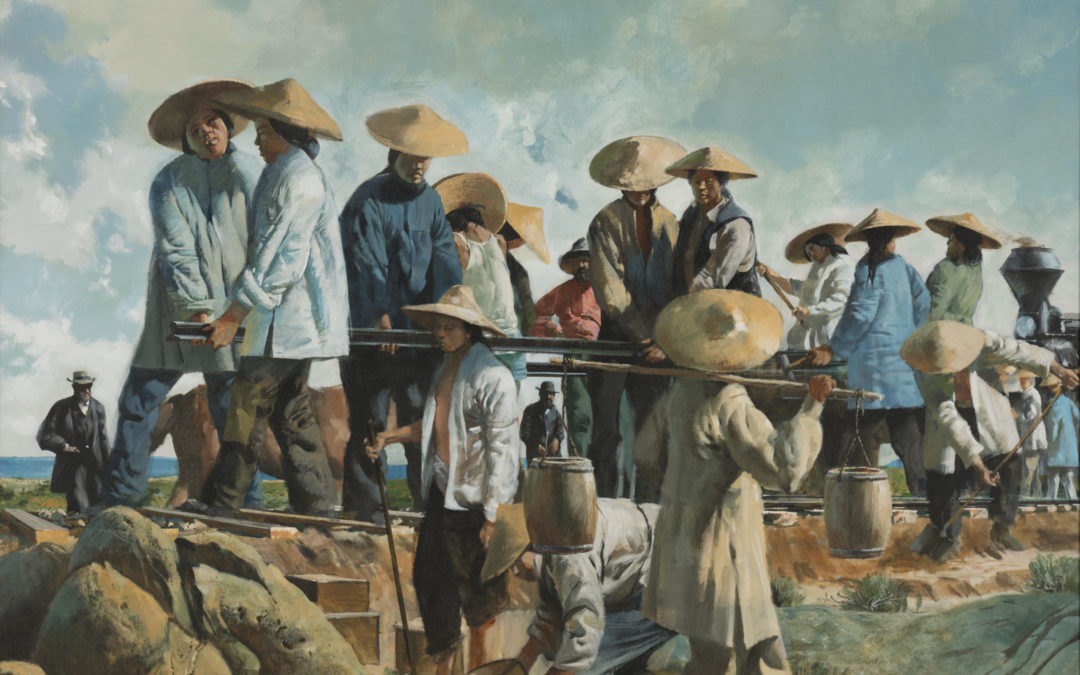
Chinese Track Layers
Dale W. Bryner, Artist
Chinese immigrants were drawn to the western United States as a result of the Opium Wars and to ensure their families’ survival. A significant portion of the labor force for the first American transcontinental railroad was made up of Chinese migrant workers. Numbering between 10,000 and 15,000, the Chinese track layers constituted about 90% of the…
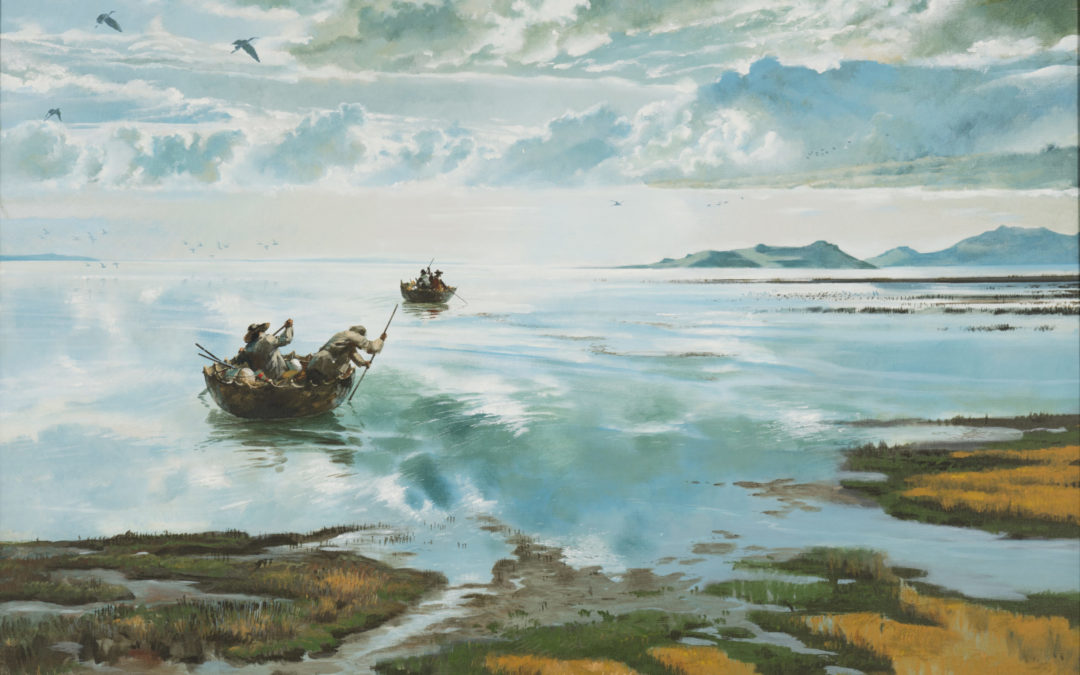
Circumnavigation of the Great Salt Lake
Dale W. Bryner, Artist
Circumnavigating the Great Salt Lake depicts an 1826 bull-boat journey used by four men who attempted to navigate the circumference of the Great Salt Lake beginning at the mouth of the Weber River. During this journey, they discovered that the lake had no outlet. While many trappers claimed credit for “discovering” the Great Salt Lake, it is widely accepted…
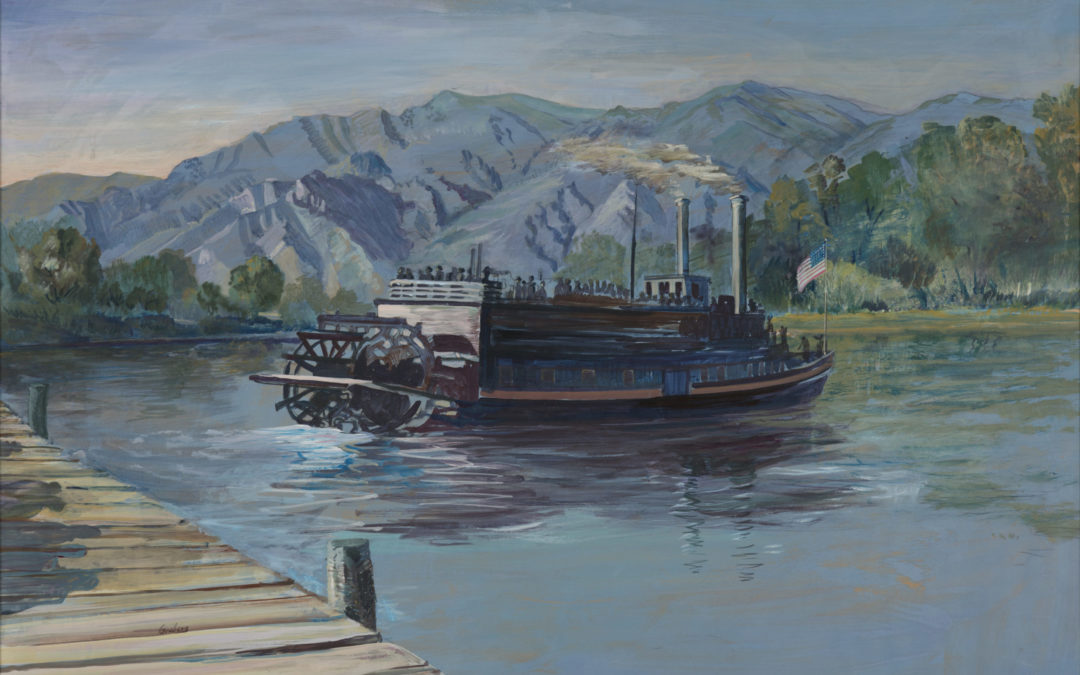
The City of Corinne
Charles A. Groberg, Artist
Corinne, Utah, located near the meeting point of the 1869 transcontinental railroads was promoted as “the Chicago of the West.” In its heyday, Corinne had 19 saloons, two dance halls, numerous gambling houses, and an elaborate opera house.
In the 1870s, Corinne residents hoped to take advantage of the Bear River and launched…
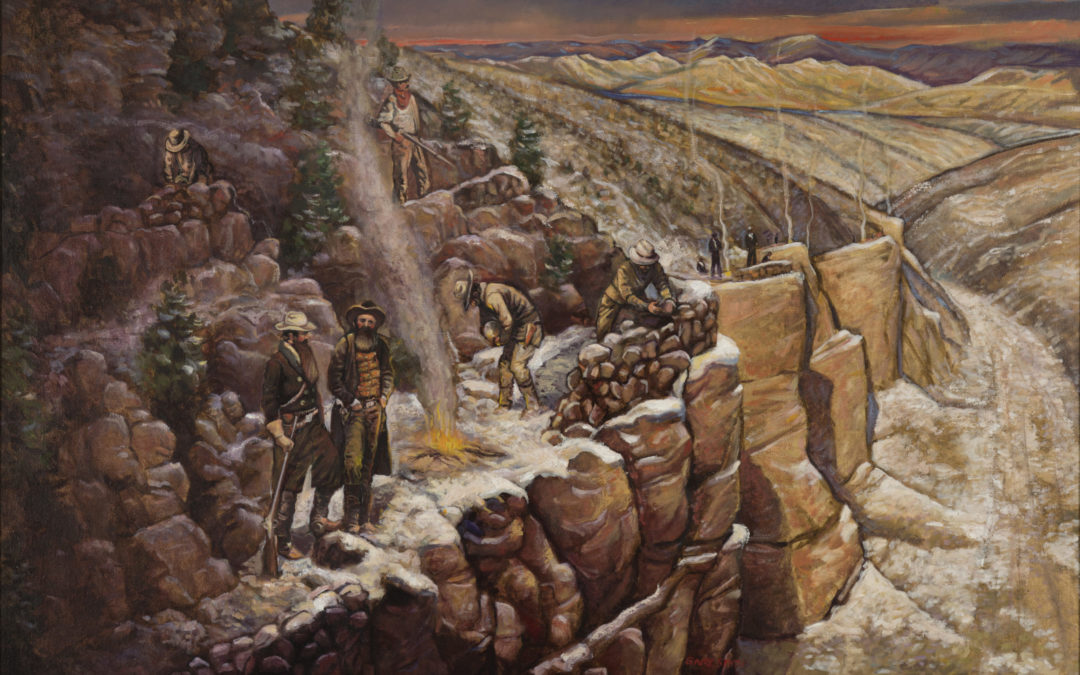
Echo Canyon Fortifications
Gary E. Smith, Artist
In response to reports about the Utah settlers’ disloyalty to the federal government, President James Buchanan ordered a large contingent of the U.S. Army to accompany a new governor to Utah territory.
Nervous about the intentions of this incoming military force, Brigham Young ordered…
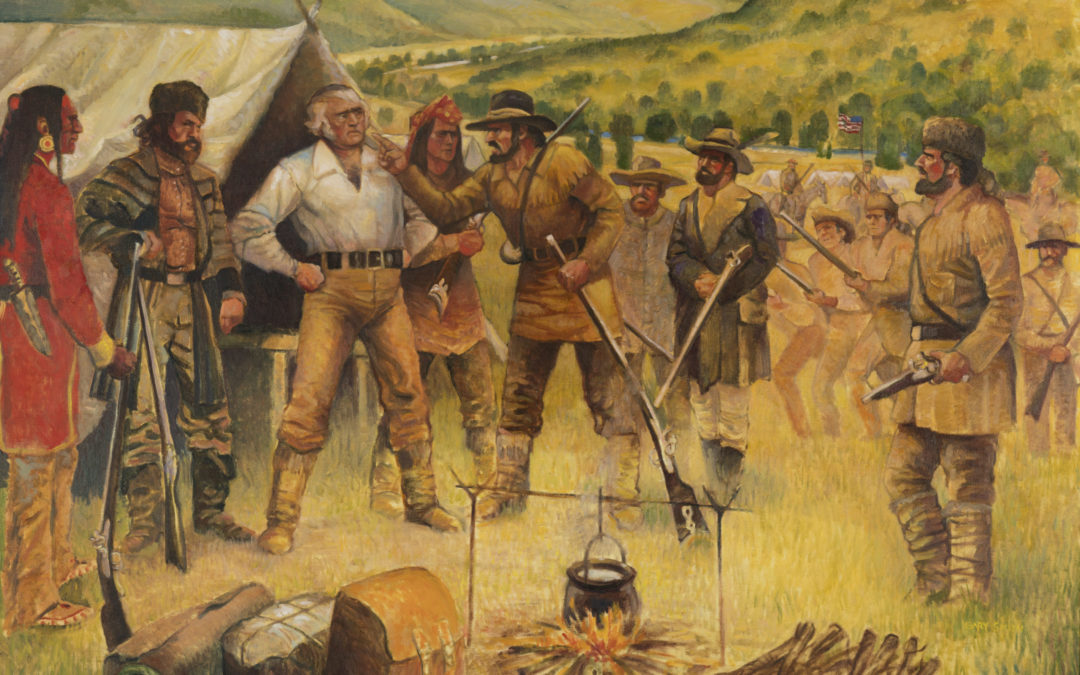
Encounter at Mountain Green
Gary E. Smith, Artist
Encounter at Mountain Green depicts a confrontation between members of the British Hudson’s Bay Company under Peter Skene Ogden, Rocky Mountain Fur Company trappers led by Johnson Gardner, and a company of fifteen trappers with French Canadian Etienne Provost – after whom Provo was named – that occurred near the Weber River in…

Bamberger to Lagoon
Mary Roberts Warnock, Artist
The Bamberger Railroad was built in 1891 by wealthy capitalist, entrepreneur, and Utah governor, Simon Bamberger. The railroad was first known as the Great Salt Lake and Hot Springs Railway, and later as the Salt Lake and Ogden Railway.
The “Bamberger” was considered to be one of the most efficient, and successful passenger and freight…

Battle of Bear River
Richard J. Van Wagoner, Artist
Due to federal concerns about the state of the Union during the American Civil War, President Abraham Lincoln ordered several regiments to protect mail routes and communication lines to the west. Colonel Patrick Connors was put in…

Cache Valley Rendezvous
Lee K. Parkinson, Artist
It was traditional for mountain men to meet for an annual rendezvous to trade beaver pelts, restock supplies, and share stories of their experiences traveling through the western mountains and prairies. Native Americans were also…

Chief Pocatello at Brigham City
Gary E. Smith, Artist
Pocatello or Paughatella was born in 1815 in the Grouse Creek region. He was a Shoshone leader when the Mormons arrived in the late 1840s. As colonization intensified, Pocatello led raids along immigrant trails. War broke out in 1862 when Shoshone struck every stage station in a wide area. Pursued by the military, weary and discouraged, Pocatello and eight other Shoshone leaders signed a treaty on July 30, 1863, but the Shoshone continued to suffer and find relief in…

Chief Washakie at Huntsville
Franz Johansen, Artist
Chief Washakie (1804-1900) was a prominent Shoshone leader and was among the most famous Native American leaders. He was known to be a powerful warrior and statesperson and played a significant role in the development of the western United States territory by forming strong relationships with mountain men, government officials, and religious…

Chinese Track Layers
Dale W. Bryner, Artist
Chinese immigrants were drawn to the western United States as a result of the Opium Wars and to ensure their families’ survival. A significant portion of the labor force for the first American transcontinental railroad was made up of Chinese migrant workers. Numbering between 10,000 and 15,000, the Chinese track layers constituted about 90% of the…

Circumnavigation of the Great Salt Lake
Dale W. Bryner, Artist
Circumnavigating the Great Salt Lake depicts an 1826 bull-boat journey used by four men who attempted to navigate the circumference of the Great Salt Lake beginning at the mouth of the Weber River. During this journey, they discovered that the lake had no outlet. While many trappers claimed credit for “discovering” the Great Salt Lake, it is widely accepted…

The City of Corinne
Charles A. Groberg, Artist
Corinne, Utah, located near the meeting point of the 1869 transcontinental railroads was promoted as “the Chicago of the West.” In its heyday, Corinne had 19 saloons, two dance halls, numerous gambling houses, and an elaborate opera house.
In the 1870s, Corinne residents hoped to take advantage of the Bear River and launched…

Echo Canyon Fortifications
Gary E. Smith, Artist
In response to reports about the Utah settlers’ disloyalty to the federal government, President James Buchanan ordered a large contingent of the U.S. Army to accompany a new governor to Utah territory.
Nervous about the intentions of this incoming military force, Brigham Young ordered…

Encounter at Mountain Green
Gary E. Smith, Artist
Encounter at Mountain Green depicts a confrontation between members of the British Hudson’s Bay Company under Peter Skene Ogden, Rocky Mountain Fur Company trappers led by Johnson Gardner, and a company of fifteen trappers with French Canadian Etienne Provost – after whom Provo was named – that occurred near the Weber River in…
